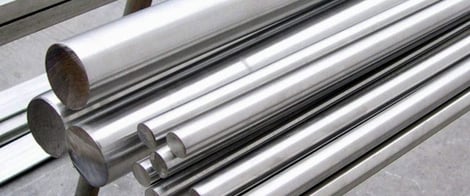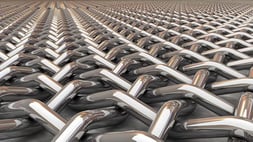304 vs 316 Stainless Steel Architectural Mesh: Which Is Right for Me?
Architectural mesh is a design material that has the ability to make any structure stand out, whether retrofitting a mesh system onto an existing structure or implementing it into a new design. That said, hundreds of architects are unsure as to what mesh properties will work best for their architectural design process, as it is still new to the industry.
One of the first properties you will want to establish is what alloy type you will be using, as this will dictate how robust the overall system will be for the desired application. Failure to implement an adequate alloy can lead to rust and corrosion, which will affect the mesh's aesthetic and, more importantly, raise a potential hazard for onlookers.
This is why stainless steel, specifically 304 and 316 stainless steel, is used to construct architectural mesh. Knowing that, it is important that architects understand the difference between these two alloys to ensure the right one is used.
At W.S. Tyler, we take pride in using our 20 years of architectural mesh experience to help architects, such as yourself, gain a better understanding of what mesh properties best suit their needs.
To help you gain a better understanding, this article will establish:
- What stainless steel is
- How 304 stainless steel compares with 316 stainless steel
- What low carbon steel is
- Which alloy you should use for your next architectural mesh project
What Is Stainless Steel?
Stainless steel is best described as a steel alloy that consists of .1% to .2% carbon and a chromium level that exceeds 12%. The chromium within the alloy must be added, as it is typically not found in other steel alloys naturally.
To ensure a permanent molecular bond, this is done when steel is in a molten state.

Now, most steel alloys are classified by their level of quality. It's for this reason why there are dozens of different stainless steel alloys available.
In the world of architectural mesh, 300 series stainless steel is the most widely used. While there are nine different alloys within the 300 series family (304, 309, 310, 316, 317, 318, 321, 330, 347), architectural mesh systems are typically constructed from 304 and 316.
304 vs 316 Stainless Steel
When comparing 304 stainless steel to 316 stainless steel, their corrosion resistance, heat resistance, formability, and overall durability stand as the main differentiating factors.
In terms of chemical makeup, 304 stainless consists of 18% chromium and 8% nickel, whereas 316 stainless steel consists of 16% chromium, 10% nickel, and 2% molybdenum. The higher nickel content and molybdenum presence make 316 higher in quality than 304.
That being said, both 304 and 316 stainless steel can be welded.
While the cost margins between the two alloys are not significant, 316 stainless steel is the more expensive of the two. So if a piece of 304 stainless steel costs $2.50 per square foot, then 316 stainless steel may cost around $2.65 per square foot.
Low Carbon Steel
As mentioned earlier, the amount of carbon present in the steel alloy is one of the qualities that help determine if it can be considered stainless steel. When the carbon level is less than .03%, the alloy is regarded as low carbon steel, often referred as L-grade.
Now, this limited percentage of carbon minimizes the carbide precipitation throughout the alloy. In turn, the alloy is more resistant to corrosion.
In other words, the higher percentage of carbon in an alloy, the more likely it will corrode, rust, and otherwise become compromised when moisture is present. This is why L-grade steel is ideal for architectural mesh systems exposed to moisture, such as ocean side facades.
Which Alloy Is Right For Me?

The alloy you should use to construct your architectural mesh panels ultimately depends on the application. If the panels are going to be subjected to corrosive elements, such as airborne sea salt or bromine and chlorine used to treat pools, 316 will be ideal.
That said, if you are going to use the panels for non-corrosive applications, such as interior acoustic sound panels or interior infill panels, 304 will provide the best value.
If you desire to utilize the qualities of welded wire mesh or cable mesh, low carbon steel should be used, whether it's 304 and 316. This is because carbon absorbs heat and will impact the effectiveness of the welding process needed to construct these mesh types.
Gain A Better Understanding Of How Architectural Mesh Can Be Used
Architectural mesh is one of the most unique design materials on the market, providing any structure with a one-of-a-kind atmosphere. As these mesh systems must stand the test of time, architectural mesh is often constructed out of 304 or 316 stainless steel.
These steel alloys are generally classified based on their overall quality and level of carbon as well as chromium present in the alloy. That said, once you determine the alloy, you must then seek to understand the different ways architectural mesh is applied to ensure you make the most out of your architectural design process.
Having gained over 20 years of architectural mesh experience, W.S. Tyler is here to help ensure you turn your architectural vision into a reality.
To learn more about the different ways architectural mesh can be applied, review the following articles:
About Ronnie Brown
Ronnie is the Content Writer for W.S. Tyler and has four years of experience as a professional writer. He strives to expand his knowledge on all things particle analysis and woven wire mesh to leverage his exceptional writing and graphic design skills, creating a one-of-a-kind experience for customers.




